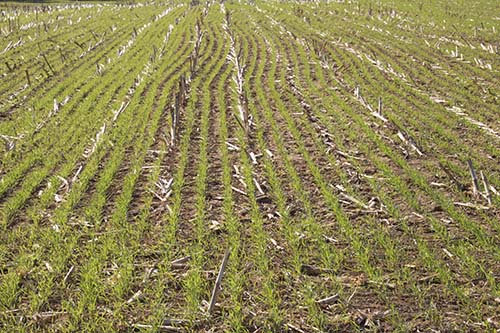
While a criminal trying to "cover up" a crime is a bad thing, crops used to "cover up" fields between cropping seasons are just the opposite. And even though cover crops are defined as noncash crops grown between two cash crops, that does not mean they don't have value.
"Cover crops have tremendous value," explained Jim Paulson, a University of Minnesota Extension Educator, during his presentation at the Four-State Dairy Nutrition and Management Conference held in Dubuque, Iowa.
The purposes of a cover crop are many, including erosion control, water infiltration, improved soil health, organic matter buildup, nitrogen uptake and production, and mineral movement. Overall, cover crops are used to enhance the soil biome so that it can complete normal soil functions.
"As long as we have roots doing something, we have soil doing something," Paulson said.
Diversity of cover crops is a goal, including plant type and root depth and type. A farm must select cover crops that specifically meet each field's needs and the time of year. A producer also has to decide if they want to graze or harvest the crop, if they will apply manure before or after, and if they want to utilize no-till or minimum till.
The price one is willing to pay should also be a consideration. Paulson pointed to data from a recent SARE (Sustainable Agriculture Research and Education) survey, in which cost was one of the top concerns farmers had about cover crops. Among the survey participants, establishment had an average cost of $12 per acre, while seed costs averaged $25 per acre.
Paulson also shared that winter cereals (including cereal rye and triticale) were the most common cover crop planted by survey respondents.
June 27, 2016








